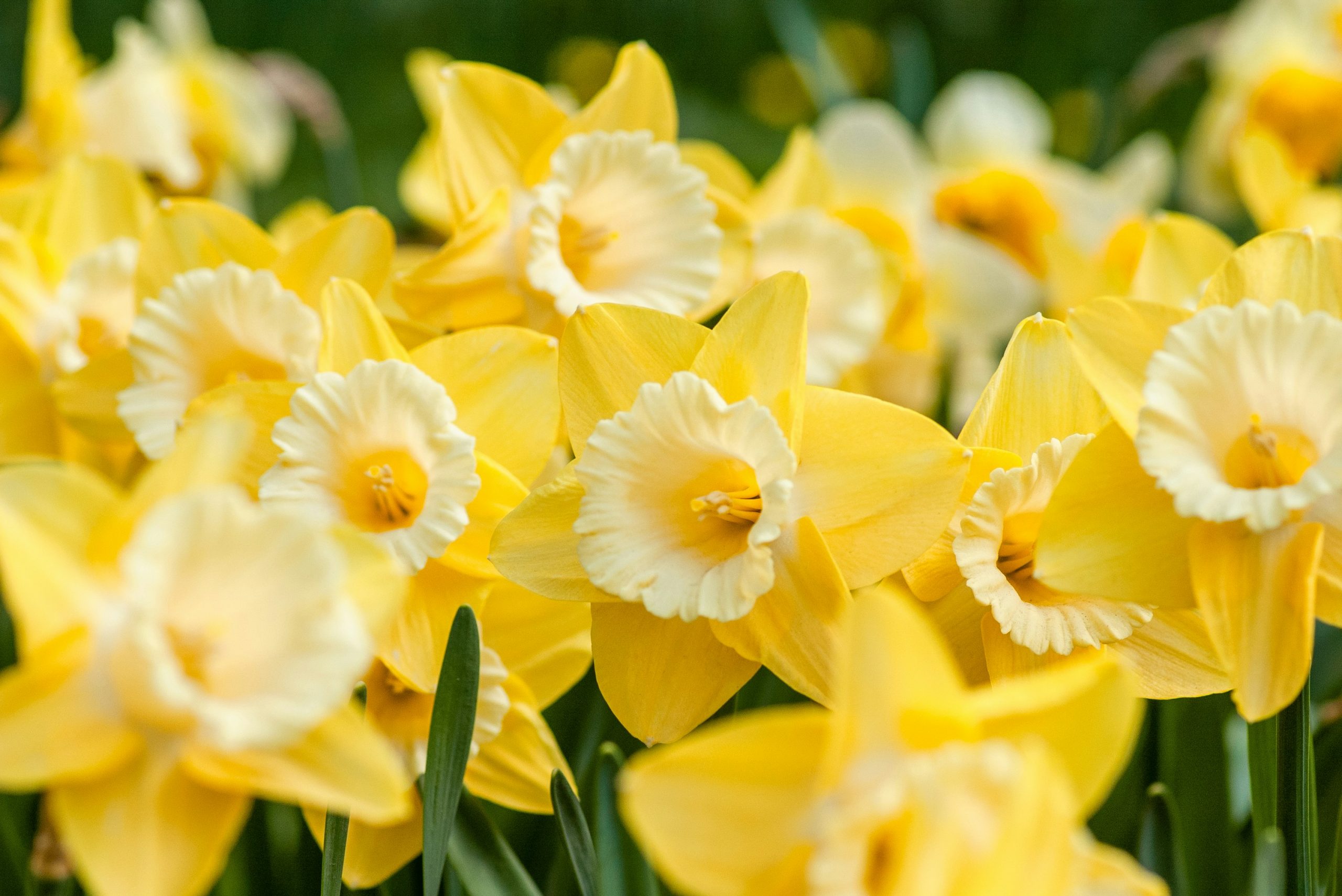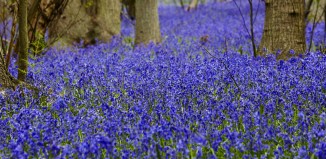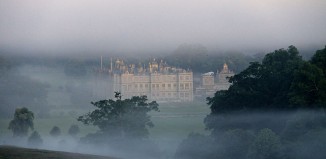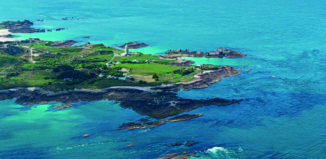Plas Newydd
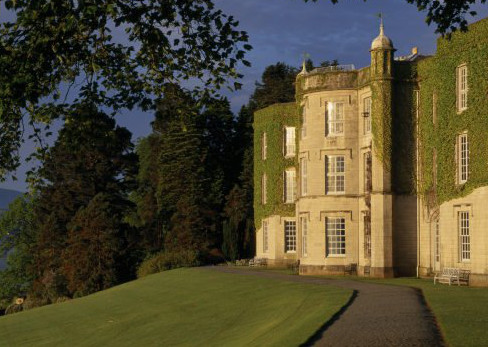
Keeping watch over the mainland from Anglesey’s southern shore, the neo-classical mansion of Plas Newydd has drawn the gaze of those journeying along the Menai Strait for centuries. Surrounded by gardens and a landscape that changes from season to season, the house is camouflaged by the Virginia creeper that envelopes it – a bright green quilt that slowly turns from green to scarlet as the months slip by. While the estate benefits from spectacular water views, it is best admired from the opposite shore or by boat, the East front of the house resplendent as the last rays of sunshine blaze through the windows.
Owned, occupied and updated by generations of the same family for centuries, the estate has been under the care of the National Trust since 1976. Records date the property to the 15th century when it was owned by the Griffith family who held vast swathes of land in the region. The estate then passed by marriage to the Baylys and eventually to the esteemed Pagets, whose fortunes began in the 16th century with William, 1st Baron Paget. His looming likeness can be viewed in the property’s entrance hall. A close associate and employee of Henry VIII, William rose through the ranks of the king’s entrusted court, eventually earning a peerage in 1549, which came with the Beaudesert estate in Staffordshire.
By the 19th century the family had bought a number of other estates, including Plas Newydd. It was also a time of great pride: the distinguished heir Henry Paget, 1st Marquess of Anglesey was held in high regard for his courage in the Battle of Waterloo by the side of the Duke of Wellington. He famously lost a leg in the fray but benefited from pioneering medical science, wearing the first artificial leg to be articulated at both knee and ankle. Now on display in the house galleries, the relic is a thing of wonder to the parties of medical students who come especially to study it.
The family’s good fortune and reputation were to change dramatically in the early 20th century following financial crisis which diverted the natural order of inheritance away from Beaudesert (now demolished), and prompted members of the family to claim the remaining Anglesey estate as their primary residence.
The catalyst was the flamboyant Henry Cyril Paget, 5th Marquess, whose extravagant spending on his two passions – the theatre and jewellery – left the Paget fortune seriously depleted. In his short lifetime of just 29 years, the Eton educated Marquess founded his own theatre company at Plas Newydd, hiring professional actors to perform there. The troupe even toured the nation’s theatres to mixed reviews. Although untrained as an actor, this did not deter the young Marquess from taking to the stage to the bemusement of audiences dazzled by his costumes, dance routines and stage sets. Surpassing his vast annual income of £110,000 the inevitable financial crisis came in 1904, leading to a 40-day sale of the items he had purchased. In shame he fled to Monte Carlo and died there of pleurisy a year later. With no natural heir Plas Newydd passed sideways to his cousin Charles, the 6th Marquess, who set about making it his own.
“Under the 6th Marquess, Plas Newydd became the family’s primary residence for the first time in two centuries”, says Visitor Operations Manager Barbara Stanley. “Hopefully what people gauge from their visit is the sense that this is still a family home,” she adds. “It’s not as grand inside as some of the Trust’s properties but this did not deter royalty from gracing the threshold: a young Princess Victoria danced the evening away in the Music Room – a space now licensed for wedding ceremonies.”
The current Marquess had always wanted the estate to be preserved for the enjoyment of future generations but when he inherited it from his father, the 6th Marquess, he had to pay huge sums in death duty. Not wanting this to potentially burden his own children, which could have led to the sale of the property, he donated Plas Newydd to the National Trust in 1976, with the proviso that private rooms were available for use as long as he and Lady Anglesey needed them.
Today, the house welcomes thousands of visitors who come to explore it corridors, but a tour of the mansion only tells one part of the Plas Newydd story. Beyond its walls are 169 acres of grounds that were lovingly crafted to become a canvas to rival the interiors.
“We say that Plas Newydd offers the world in one garden,” says head gardener Paul O’Byrne. “Many of our exotic plants were established in the 18th century by [Henry Paget] the 1st Earl of Uxbridge who later sought the help of leading designer Humphry Repton. Our equable climate means that we can enjoy plants from every continent bar Antarctica, from arctic to sub-tropical.”
One of the most extraordinary areas of the garden is the Australasian arboretum, where the canopy of Chilean beeches (which caused Charles Darwin to moan about the gloom of the Tierra del Fuego Nothofagus forest) contrasts with airy and aromatic eucalypts, and both shelter many plants from the southern hemisphere.
“The common names of some of the plants give a clue to their uses,” explains Paul. “Eucalyptus dalrympleana is called Kindlingbark, and Lobelia tupa is known as Tabaco del Diablo by the Mapuchu Indians of Chile who smoke its fiery red flowers and leaves for their hallucinogenic effects.”
During the 1920s and 30s, the 6th Marquess set about transforming the garden as part of his ambition to revive the entire estate. He demolished a conservatory built for the 5th Marquess and created an Italian-style terrace garden in its place, featuring eight rose beds. To the north of the house he carved a rhododendron plot out of Repton’s woodlands for which the property is probably most famous. This six-acre site was filled with Himalayan species and magnolia, and cuttings from Bodnant were added to create a parade of colour and scent. Open during the flowering season from late March to the end of May, the Rhododendron Garden can be reached via Lady Uxbridge’s Walk, which runs along the shoreline from the house. En route it is possible to pause and view Robert Stephenson’s Britannia Bridge across the strait, which carries road and rail traffic to and from Anglesey.
Returning visitors will notice some more recent changes to the grounds. The newly completed Catkin Garden contains 20 species of willow, hazel, birch and alder and has been under-planted with 30,000 spring bulbs including Camassia, Crocus, Narcissus, Erythronium, Fritillaria and Leucojum. In Dairy Wood next to the adventure playground is the country’s first official Frisbee golf course, ready to test hand-eye co-ordination on a course plotted between the trees. The team has also completed a rather grand tree house on the lawn, which claims some of the best views on the island and will no doubt be claimed by convoys of school children eager to call it home.
When not enjoying the delights of their new accommodation children can usually be found rolling at speed down the undulating lawns or playing hide and seek in the woodland. Weary parents can sit and admire the views, the flowers or stroll along the waterside walk. The path by the water’s edge leads to Church Bank Wood where birdwatchers can duck into a hide angled for views of life on the Strait.
Closer still to the house is a jetty operated by Cheshire County Council from where parties of organised youth groups experience all the fun of the water. However Plas Newydd’s visitors need not miss out on the action. From Easter all the family can take part in canoeing, kayaking and sailing, along with hands-on practical tasks such as raft building, which can booked direct through the National Trust.
Next to the west façade of the mansion the second of three phases of re-planting in the Sun Room Terrace is underway. The first phase is established and includes a swathe of alpines and dwarf shrubs such as Ceanothus, Artemisia, Sempervirens, Sedum, Dianthus and Phlox, many of which are planted directly into the limestone retaining wall, giving the impression of a flower-encrusted cliff. The Rill Garden, with its charming cascade splashing through boulders and cobbles, froths with spring flowers such as Saxifrage, Trillium, Lamium, Tiarella and Heuchera.
“Although the gardens are popular there is plenty of space for people to enjoy peace and quiet,” says Barbara. “Long before I came to work here this was my sanctuary – I’d sit by the water with a book and let the hours slip by, and if someone was on ‘my’ bench, I’d wait until they moved. Sometimes I can’t quite believe that I’m lucky enough to spend every day here.”

